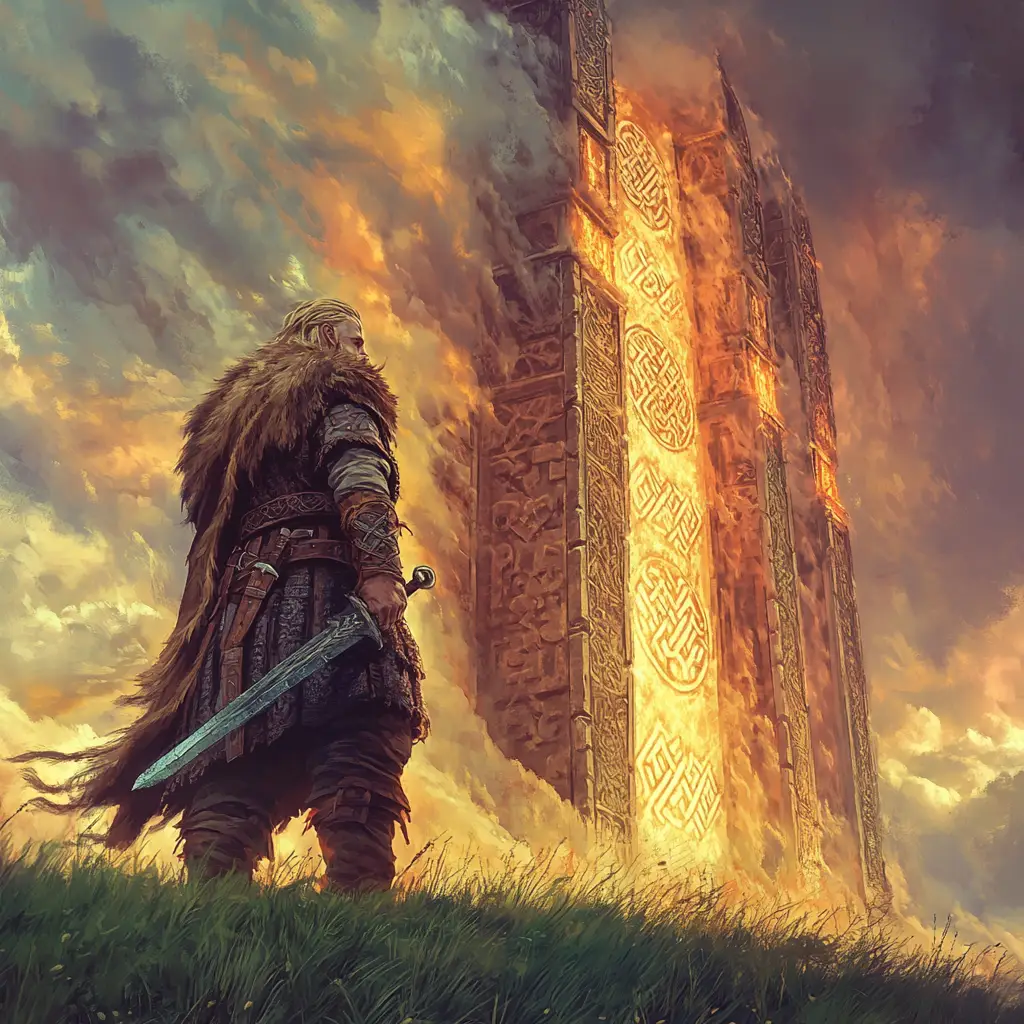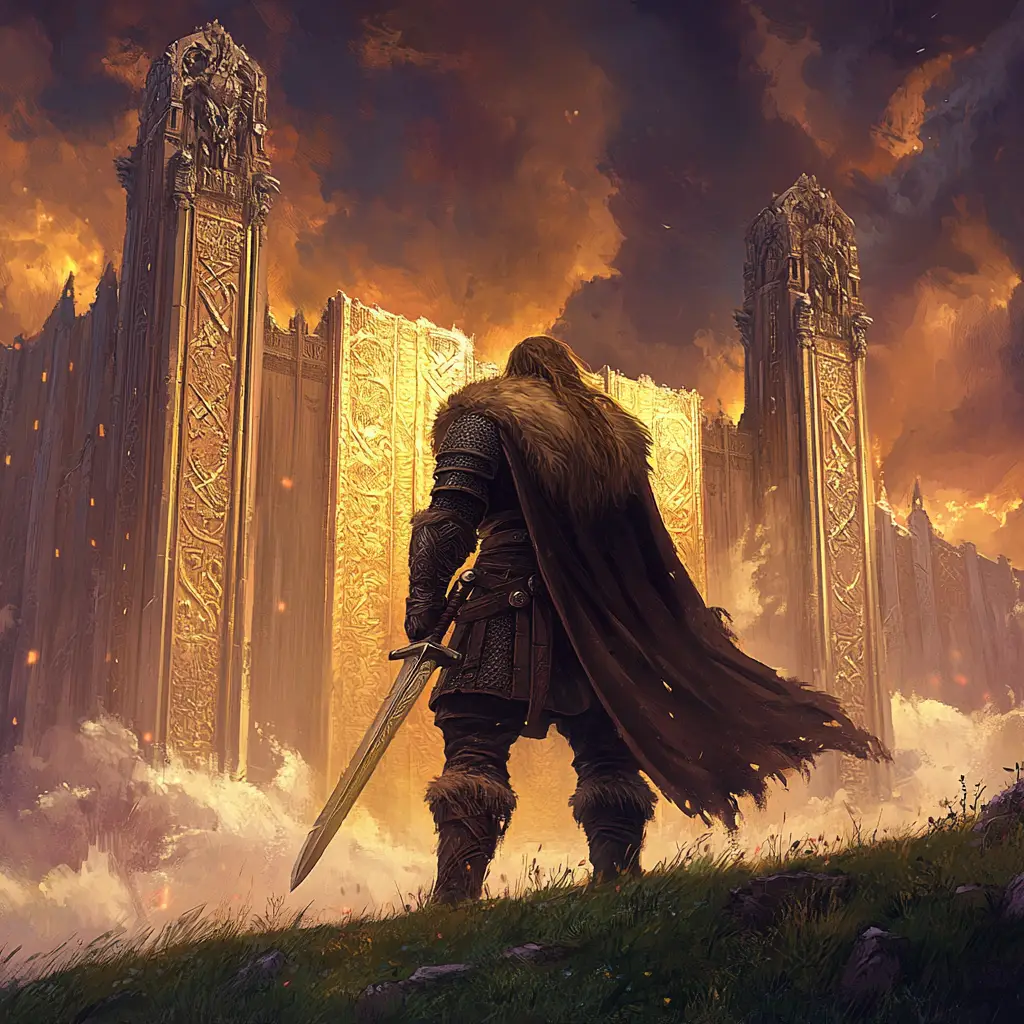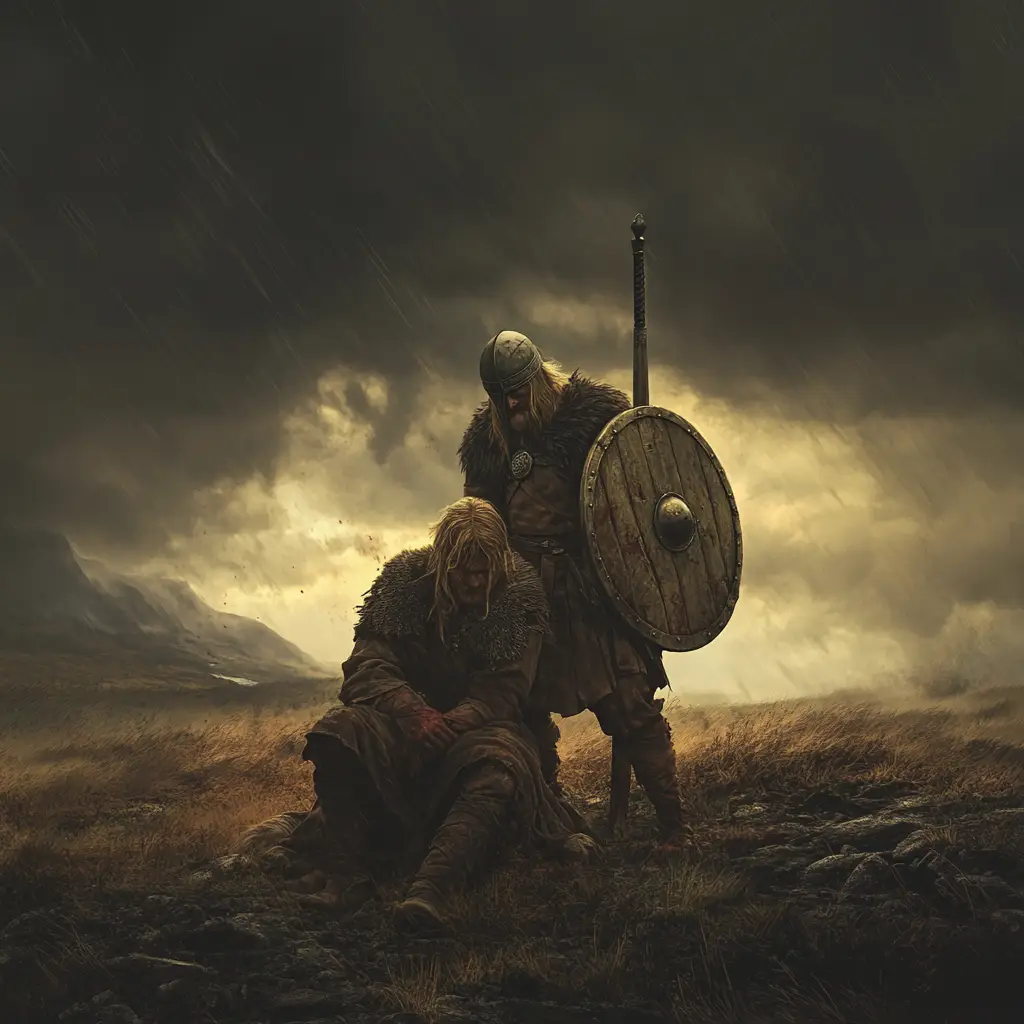Viking death customs were deeply entwined with their beliefs about the afterlife, honour, and the gods. They viewed death not as an end, but as a transition to another realm, often marked by significant rituals, sacrifices, and commemorations. Here’s a look at Viking death customs:
The Afterlife
Valhalla: For Vikings who died bravely in battle, the ultimate goal was to be chosen by the Valkyries and taken to Valhalla, the hall of Odin. Here, warriors would fight by day and feast by night, preparing for the final battle of the gods, Ragnarok. They believed that to die honourably in battle was the highest form of death.
Hel: For those who died of old age, illness, or accidents (rather than in battle), the afterlife was believed to be in Hel, a cold, gloomy realm ruled by the goddess Hel, daughter of Loki. Hel was not necessarily a place of torment, but more of a dreary existence.
Ragnarok: This was the apocalyptic battle at the end of the world, where the gods and the dead would face off in a final conflict. Vikings believed that those who died bravely would be ready to fight for Odin during this event.
Ship Burials
Burial at Sea: The most iconic Viking funeral was the ship burial. A Viking warrior, particularly a high-status individual, might be laid in a longship, often with weapons, shields, food, and other grave goods to accompany them in the afterlife.
Burial Mounds: Sometimes the ship was placed on land, and a burial mound was raised over it, often with the body of the deceased and other offerings like animals, jewellery, and tools. The mound would serve as both a monument and a tomb.
Funeral Pyres: In some cases, the ship itself was set on fire and sent out to sea. This dramatic ritual symbolized the warrior’s journey to the afterlife.
Rituals and Sacrifices
Blóts: The Viking funeral often involved a blót, or sacrificial ritual. Animals were sacrificed, usually to the gods, to ensure the safe passage of the deceased. Sometimes, it is believed that human sacrifices were made to accompany the dead, particularly important warriors or leaders, although this practice was not as common as some stories suggest.
The Body: The deceased was carefully prepared for burial, often dressed in their best clothes or armour. The body might be anointed with oils and perfumes, and sometimes a sword or axe would be placed beside them. They might also be given food, drink, and other items they might need in the afterlife.
Death Feasts and Mourning
Feasting: After the funeral, it was customary for the community to gather and feast in honour of the deceased. The feast symbolized the continuity of life and was also a way of ensuring that the spirit of the deceased would be properly nourished for its journey.
Mourning: Family and friends mourned the dead, but they did so in a way that emphasized the warrior’s honour. Women, particularly, would sometimes wear black or dark clothing and could be seen lamenting or singing funeral songs. There were also customs of wailing and ritualized grief.
Tombstones and Memorials: Viking graves often included runestones or carvings to commemorate the dead. These stones might include inscriptions of the person’s name, accomplishments, and sometimes the cause of their death.
Viking Death Oaths and Revenge
Revenge: Death was not the end for many Vikings. They strongly believed in the concept of blood feuds, where the family or kin of a deceased person might take vengeance on those who were believed responsible for their death. This cycle of revenge and retribution was an integral part of Viking society.
Oaths: In the event of a death, those left behind might swear oaths of vengeance or carry out specific rituals to ensure justice was served.
The Role of the Valkyries
Valkyries: These female figures, often depicted as warriors, were believed to choose which warriors would die in battle and who would be taken to Valhalla. The Valkyries were central to the Viking view of death, as they determined the fate of the fallen, leading them to the gods’ hall for an eternal afterlife of honour and glory.
Ancestor Worship
Respecting the Dead: The Vikings were heavily influenced by a belief in honouring their ancestors. They believed that the spirits of the deceased remained part of the family and would guide or protect their descendants. Many rituals and customs focused on remembering and respecting the ancestors, often through offerings or prayers at family shrines or ancestral graves.
Tales of the Fallen
Eddas and Sagas: After a warrior’s death, their deeds would be immortalized in stories, such as the Eddas or sagas. These tales recounted the valour, wisdom, or foolishness of the deceased, ensuring their memory lived on in Viking culture. The Sagas were often recited at feasts and ceremonies, preserving the warrior’s legacy.
Viking death customs were an essential part of their worldview, emphasizing honour, bravery, and respect for the gods. The rituals surrounding death were meant to ensure the deceased’s safe passage into the afterlife and maintain the balance between the living and the dead.



